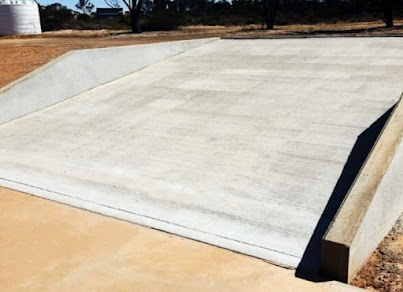A Complete Guide to Durable Concrete Ramps for Sydney Homes and Businesses
Concrete ramps are essential for enhancing accessibility and safety in both residential and commercial properties. In Sydney, the demand for robust and compliant concrete ramps continues to grow as property owners prioritise inclusivity and long-term value. Here’s what you need to know about installing durable concrete ramps in Sydney.
Why Choose Concrete Ramps in Sydney?
Concrete ramps are renowned for their strength, longevity, and low maintenance requirements. Unlike timber or aluminium alternatives, concrete provides a solid, cohesive surface that can withstand heavy loads, making it ideal for both homes and businesses where durability is paramount. The non-slip texture of concrete ramps also ensures safe passage for wheelchairs, strollers, and carts, even in wet conditions.
Key Benefits of Concrete Ramps
Accessibility: Concrete ramps offer smooth transitions for people with mobility challenges, meeting the needs of wheelchair users and those with strollers or trolleys.
Compliance: Properly constructed concrete ramps in Sydney adhere to Australian Standards for Access and Mobility (AS 1428) and the Disability Discrimination Act (DDA), ensuring legal compliance for both residential and commercial properties.
Customisation: Concrete ramps can be tailored to fit various site requirements, accommodating different slopes, widths, and finishes for aesthetic integration with your property.
Construction Essentials
Building a durable concrete ramp involves several critical steps:
Sub-base Preparation: A strong sub-base, typically made of compacted gravel, is essential to support the ramp’s weight and prevent settling over time.
Formwork and Pouring: Wooden forms are constructed to shape the ramp, then filled with a stiff concrete mixture. Proper water content is crucial to avoid surface slumping and ensure an even, durable finish.
Slope and Dimensions: The optimal slope for accessibility is generally 1:14 to 1:20, allowing safe and comfortable movement. The minimum recommended width is 900mm, with wider ramps preferred for commercial spaces.
Safety Features: Handrails, non-slip surfaces, and edge protection (crutch stops) are vital for user safety. Bevelled entrances and exits further reduce trip hazards and facilitate smooth transitions.
Residential vs. Commercial Needs
While both settings require durability and compliance, commercial ramps often need to accommodate higher foot traffic and heavier loads. Features such as wider passages, robust handrails, and modular designs are common in business environments. For homes, concrete ramps can be seamlessly integrated into landscaping, offering both function and curb appeal.
Maintenance and Longevity
Concrete ramps in Sydney require minimal upkeep. Regular cleaning and occasional sealing will keep the surface safe and attractive for years. Their resistance to weather and heavy use makes them a cost-effective investment for any property.
Conclusion
For property owners in Sydney, concrete ramps provide a reliable solution for accessibility, safety, and compliance. Whether for a home or business, investing in a professionally designed and constructed concrete ramp ensures long-term durability and enhances the value and usability of your property.

Comments
Post a Comment